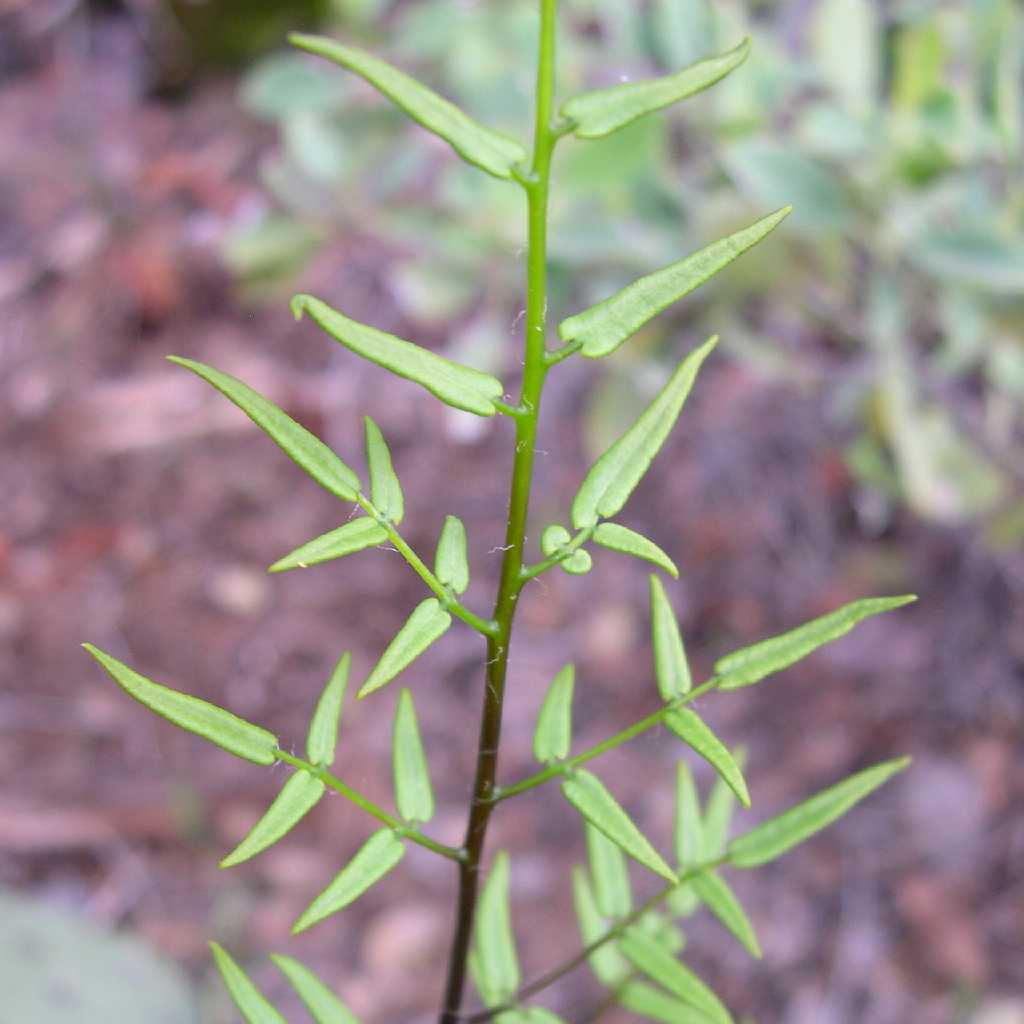Lyngholm'S Cliffbrake
(Pellaea lyngholmii)

Description
Stems compact, ascending, stout, 5--10 mm diam.; scales uniformly brown or tan, linear-subulate, 0.1--0.3 mm wide, thin, margins entire to denticulate. Leaves somewhat dimorphic, sterile leaves shorter and less divided than fertile leaves, clustered on stem, 10--30 cm; croziers villous. Petiole dark brown to reddish purple, lustrous, rounded adaxially, without prominent articulation lines. Blade elongate-deltate to ovate, 2-pinnate proximally, 5--15 cm wide; rachis brown or reddish purple throughout, straight, often slightly flattened adaxially, sparsely villous with long, divergent hairs. Pinnae perpendicular to rachis or slightly ascending, not decurrent on rachis, usually with 7--15 ultimate segments; costae straight, 25--80 mm, usually longer than ultimate segments. Ultimate segments oblong-lanceolate, 7--25 mm, leathery, sparsely villous abaxially near midrib; margins usually recurved on fertile segments, covering less than 1/2 abaxial surface, borders whitish, crenulate; apex slightly mucronate. Veins of ultimate segments obscure. Sporangia long-stalked, containing 32 spores, not intermixed with farina-producing glands.Sporulating summer--fall. Rocky slopes and ledges, usually on sandstone; 1200--1800 m; Ariz.Pellaea lyngholmii is an apogamous tetraploid that arose through hybridization between P . atropurpurea and P . truncata (M. D. Windham 1993). It is most often confused with P . atropurpurea , from which P . lyngholmii differs in having sparsely villous rachises, smaller and more numerous ultimate segments, and spores usually more than 62 -m in diameter.
Taxonomic tree:







